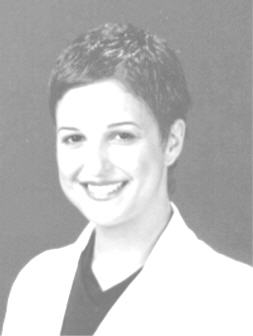Rosacea Question and Answer

Dr. Andrea Cambio is a board certified dermatologist practicing in Cape Coral. She is a Fellow of the American Academy of Dermatology and treats adults and children.
Q: My family doctor told me that I have a condition called Rosacea. How did I get this?
A: Rosacea is a common skin condition characterized by facial redness, bumpiness and swelling. Individuals with rosacea tend to be “flushers and blushers.” They also have a tendency to have small dilated blood vessels on the face. Rosacea is most common in fair skinned people in their 30s-50s, but can occur at any age. It has a tendency to run in families. It is not contagious. There are many triggers which can cause a flare of rosacea. These are spicy foods, hot beverages, alcoholic beverages, caffeine, extremes of temperature, stress and sun exposure. If untreated, rosacea can worsen and cause permanent skin changes (bulbous red nose, bumpy skin, persistent redness and visible blood vessels). The key to successful management of rosacea is early diagnosis and treatment. There are a number of treatment options available at your dermatologist’s office including prescription creams, lotions and gels and short courses of antibiotics. In some instances, laser or intense pulsed light (IPL) is used to reduce facial redness and visible blood vessels resulting from chronic rosacea.
Q: My son has developed warts on his feet. Is this because he constantly walks barefoot? What can we do about them? I am worried that they might spread.
A: Warts are benign growths caused by a skin virus. The name of this virus is the human papilloma virus, or HPV. Plantar warts are located on the soles of the feet. They can be quite painful and feel like a stone in the shoe. Wart viruses occur more frequently if the skin is damaged in some way. It is likely that your son picked them up on his feet because of his lack of foot protection. The wart virus can live for longer periods of time in wet environments with a lot of foot traffic (like public pools, boats, etc.). A variety of treatment options are available depending on the age of the patient. It is reasonable to try something over the counter at first. Warts can also be chemically or physically removed in a physician’s office. Many of the in-office procedures are quick and painless! There are also prescription medications available which help this condition. Good luck.
Q: I’m 42 years old & I have noticed that my eyelids are getting droopy & my winkles are more pronounced. Is there anything you would recommend that is non-surgical? If so, who would offer that type of treatment?
A: It sounds like you may be a candidate for a chemical brow lift using BOTOX® cosmetic. This can be done in a doctor’s office (usually a dermatologist or plastic surgeon). The entire treatment takes approximately 10 minutes, and there is no downtime afterwards. During treatment, very low doses of BOTOX® cosmetic are administered via a few tiny injections in the forehead area. BOTOX® blocks the release of a chemical that causes muscle contraction. By doing so, it causes the muscles to relax, and the wrinkles to diminish. Injections here also tend to elevate the brow and give a more refreshed, youthful appearance. When administered by an experienced physician (make sure you check your doctor’s credentials), BOTOX® injections do not affect the ability to smile, laugh or otherwise show expression. Talk to your doctor today to see if BOTOX® cosmetic is the right procedure for you. For more information, check out www.BotoxCosmetic.com. There you can learn more about the procedure, see before-and-after photographs, and stories about patient’s experiences with the treatment.
Q: I have been boating for years. I always wear sun block and a hat but have many brown spots on my cheeks. I was told that they are “liver” spots. Is there anything that can be done about them? I feel like I look 10 years older than I am. Help!
A: It sounds like you have “solar lentigines” which are the result of chronic sun exposure. They are often called “liver” spots by people, but in fact, have nothing to do with one’s liver. There are a number of treatment options available treat this cosmetic condition. Your first stop should be a visit to a dermatologist to make sure that these are indeed benign skin growths. Also a skin cancer screening should be done because of your history of sun exposure. Treatment for these brown sun spots or solar lentigines include the use of creams containing bleaching agents and retinoids and in-office procedures such as chemical peels, microdermabrasion, intense pulsed light and laser. No treatment for this condition would be complete without the daily application of sun block and the use of sun protective gear.
The above information is by no means a substitute for a visit to your doctor. For more information on these topics, visit www.aad.org
To submit a story idea or if you have a skin related question, please e-mail me at [email protected] Thanks!
– Dr. Andrea Cambio Advanced Dermatology and Cosmetic Surgery Andrew’s Professional Center 316 Del Prado Blvd. S. Suite 201 Cape Coral 829-7102 [email protected]